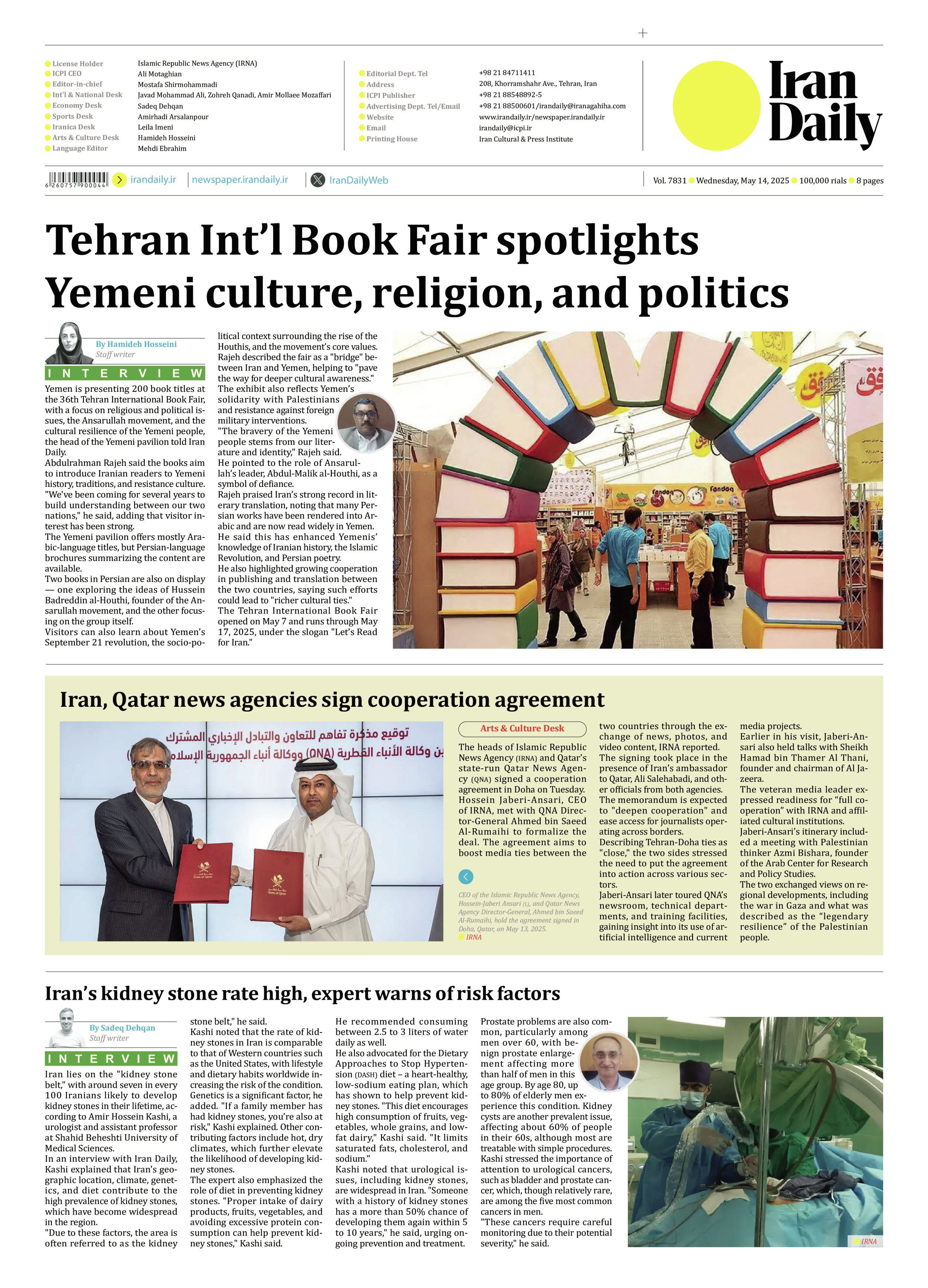
Iran’s kidney stone rate high, expert warns of risk factors
By Sadeq Dehqan
Staff writer
Iran lies on the "kidney stone belt," with around seven in every 100 Iranians likely to develop kidney stones in their lifetime, according to Amir Hossein Kashi, a urologist and assistant professor at Shahid Beheshti University of Medical Sciences.
In an interview with Iran Daily, Kashi explained that Iran's geographic location, climate, genetics, and diet contribute to the high prevalence of kidney stones, which have become widespread in the region.
"Due to these factors, the area is often referred to as the kidney stone belt," he said.
Kashi noted that the rate of kidney stones in Iran is comparable to that of Western countries such as the United States, with lifestyle and dietary habits worldwide increasing the risk of the condition.
Genetics is a significant factor, he added. "If a family member has had kidney stones, you’re also at risk," Kashi explained. Other contributing factors include hot, dry climates, which further elevate the likelihood of developing kidney stones.
The expert also emphasized the role of diet in preventing kidney stones. "Proper intake of dairy products, fruits, vegetables, and avoiding excessive protein consumption can help prevent kidney stones," Kashi said.
He recommended consuming between 2.5 to 3 liters of water daily as well.
He also advocated for the Dietary Approaches to Stop Hypertension (DASH) diet – a heart-healthy, low-sodium eating plan, which has shown to help prevent kidney stones. "This diet encourages high consumption of fruits, vegetables, whole grains, and low-fat dairy," Kashi said. "It limits saturated fats, cholesterol, and sodium."
Kashi noted that urological issues, including kidney stones, are widespread in Iran. "Someone with a history of kidney stones has a more than 50% chance of developing them again within 5 to 10 years," he said, urging ongoing prevention and treatment.
Prostate problems are also common, particularly among men over 60, with benign prostate enlargement affecting more than half of men in this age group. By age 80, up to 80% of elderly men experience this condition. Kidney cysts are another prevalent issue, affecting about 60% of people in their 60s, although most are treatable with simple procedures.
Kashi stressed the importance of attention to urological cancers, such as bladder and prostate cancer, which, though relatively rare, are among the five most common cancers in men.
"These cancers require careful monitoring due to their potential severity," he said.







